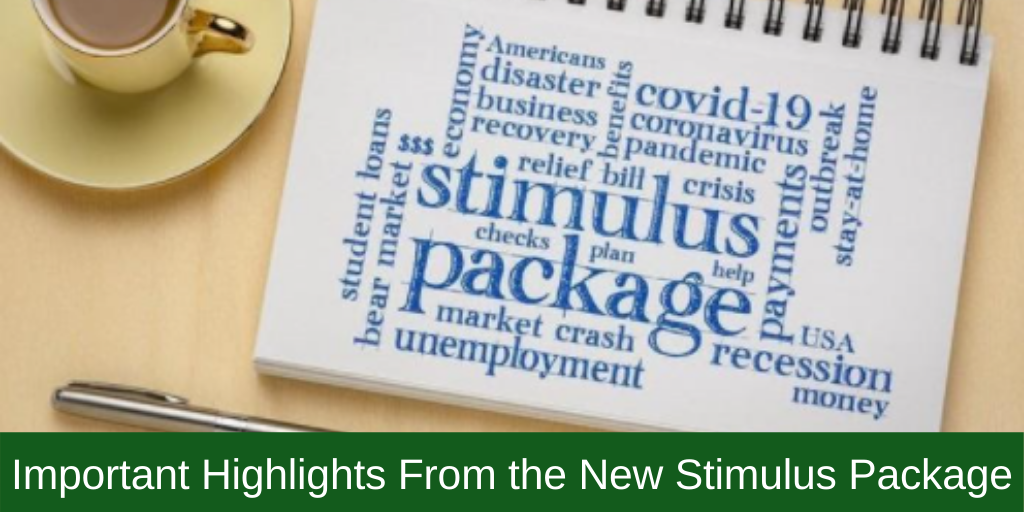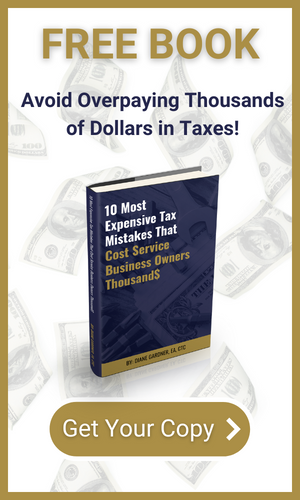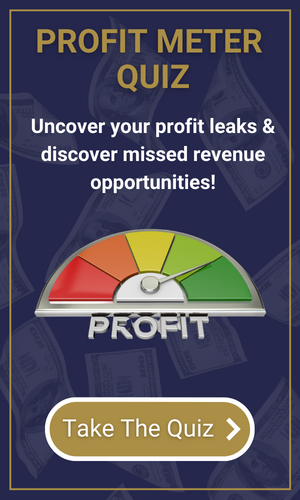A couple of weeks ago we sent out a recap of the new Stimulus Bill that was passed by Congress. Some changes were made before it was signed by President Trump. Here is a list of items that could affect you or your service business.
General Info:
- Stimulus checks of $600 per taxpayer ($1,200 for taxpayers married filing jointly) and an additional $600 per qualifying child. The payment phases out beginning at $75,000 ($150,000 MFJ) of Adjust Gross Income.
- No repayment requirement for stimulus check received that exceeds credit amount on the 2020 tax return.
- $300 ($600 for taxpayers married filing jointly) above the line charitable deduction for cash payments to public charities made in 2020.
- For 2021 & 2022 tax years – business meals and beverages will now be 100% tax-deductible if provided by restaurants for 2021 and 2022 year.
- Medical expenses exceeding 7.5% AGI will be deductible on itemized deduction Sch. A.
- Educator expense deduction (up to $250) now includes expenses incurred for the purchase of personal protection equipment.
PPP Info:
- Simplified Loan Forgiveness process for borrowers with less than $150,000 of PPP loan from the first round of PPP loans. We are waiting for SBA to release the new form to be used for these loans. (This is the automatic forgiveness we’ve been waiting for since August!!) We’ve been told payroll forms and other documents won’t have to be submitted with the new simplified form.
- Payroll costs now include employer payments for group life, disability, vision, and dental insurance payments.
- For the purposes of calculating covered payroll expenses, an owner’s $100,000 salary/wage limitation now applies on an annualized basis.
- EIDL advances are non-taxable and will not reduce PPP loan forgiveness.
- Can receive both PPP and Employee Tax Retention Credit but you can’t double-dip. This means that you can’t use the payroll that was covered by PPP funds to calculate this credit. (We’ll be reaching out to our payroll clients to advise them as to whether they may qualify for this credit.)
Second Round of PPP Loans:
- Small businesses with less than 300 employees and a 25% or more drop in gross receipts (income) for a calendar quarter (as compared to the prior applicable calendar quarter) may be eligible for a second PPP loan if they meet the necessity requirement.
- The loan will be for 2.5 times the average monthly payroll or 3.5 times the average monthly payroll for restaurants, hotels, motels, and certain other food and lodging businesses.
- Borrowers can elect to calculate the second round based on 2.5 times the average monthly payroll costs during any 12-month period ending prior to the date of the loan or the 2019 calendar year.
- March 31, 2021 is the new deadline to apply for and receive a PPP loan.
- If an eligible entity has received an initial PPP loan, they must certify that they have or will spend the full amount of their first loan.
- The borrower must certify that the loan is “necessary for the continued operation of the business”. (Businesses who have, for the most part, been able to navigate through these last few months and remain operational may have a hard time justifying the loan as “necessary” for the survival of the business unless the business is imminently about to close its doors.)
PPP Forgiveness:
- PPP loan forgiveness shall not be treated as taxable income.
- Payroll costs now include the following items:
- Salary, wages, commissions, tips
- State or local payroll taxes (unemployment tax)
- Paid leave
- Healthcare payments
- Retirement plan contributions
- Group life/disability/vision/dental insurance
- Borrower must use at least 60% of the PPP loan for payroll costs (as defined above).
- Non-Payroll costs include the following items:
- Mortgage interest
- Rent (limited for related party landlords)
- Utilities
- Interest on any other debt obligations that were incurred before the covered period
- Covered operations expenditures (Ex: QuickBooks subscription or another accounting license, enhanced cloud storage, Skype or Zoom license, CRM software license, etc.)
- Covered property damage expenditures (Ex: Costs related to property damage and vandalism)
- Covered supplier costs (Ex: expenses for anything that is necessary for the operation of the business)
- Covered worker protection expenditures
- EIDL Advances are non-taxable and no longer reduce PPP loan forgiveness.
Federal Paid Sick/Family Leave Credits:
Federally funded credits for paid sick and family medical leave are extended through March 2021 by this new Act. They were originally set to expire as of Dec. 31, 2020.
Employee Retention Credit:
- Wages are limited to $10,000/employee (maximum credit of $5,000/employee) and cannot exceed the amount such employee would have been paid for working an equivalent duration during the 30 days immediately preceding such period.
- Can now be applied retroactively by PPP recipients.
- Wages are limited to $10,000/employee per quarter (maximum credit of $7,000/quarter) and can exceed the amount employer was previously paying the employee.
- Can be applied for going forward by PPP second round loan recipients.
- Cannot take into account wages paid with PPP funds.
For 2020:
Eligible employers will receive a refundable payroll tax credit for up to 50% of wages/quarter paid to employees after March 12, 2020 through December 31, 2020 (if one of the below two requirements are met).
The operation of the business is fully or partially suspended due to orders from a government authority limiting commerce, travel, or group meetings due to COVID-19 – OR – Gross receipts are less than 50% of the gross receipts for the same quarter in the previous year until gross receipts are 80% of the gross receipts in the same quarter for the previous year.
For 2021:
Eligible employers will receive a refundable payroll tax credit for up to 70% of wages paid to employees after January 1, 2021 through June 30, 2021 (if one of the below two requirements are met).
The operation of the business is fully or partially suspended due to orders from a government authority limiting commerce, travel, or group meetings due to COVID-19 – OR – Gross receipts are less than 80% of the gross receipts for the same quarter in 2019.
Please reach out to us if you would like additional information about any of these topics.





